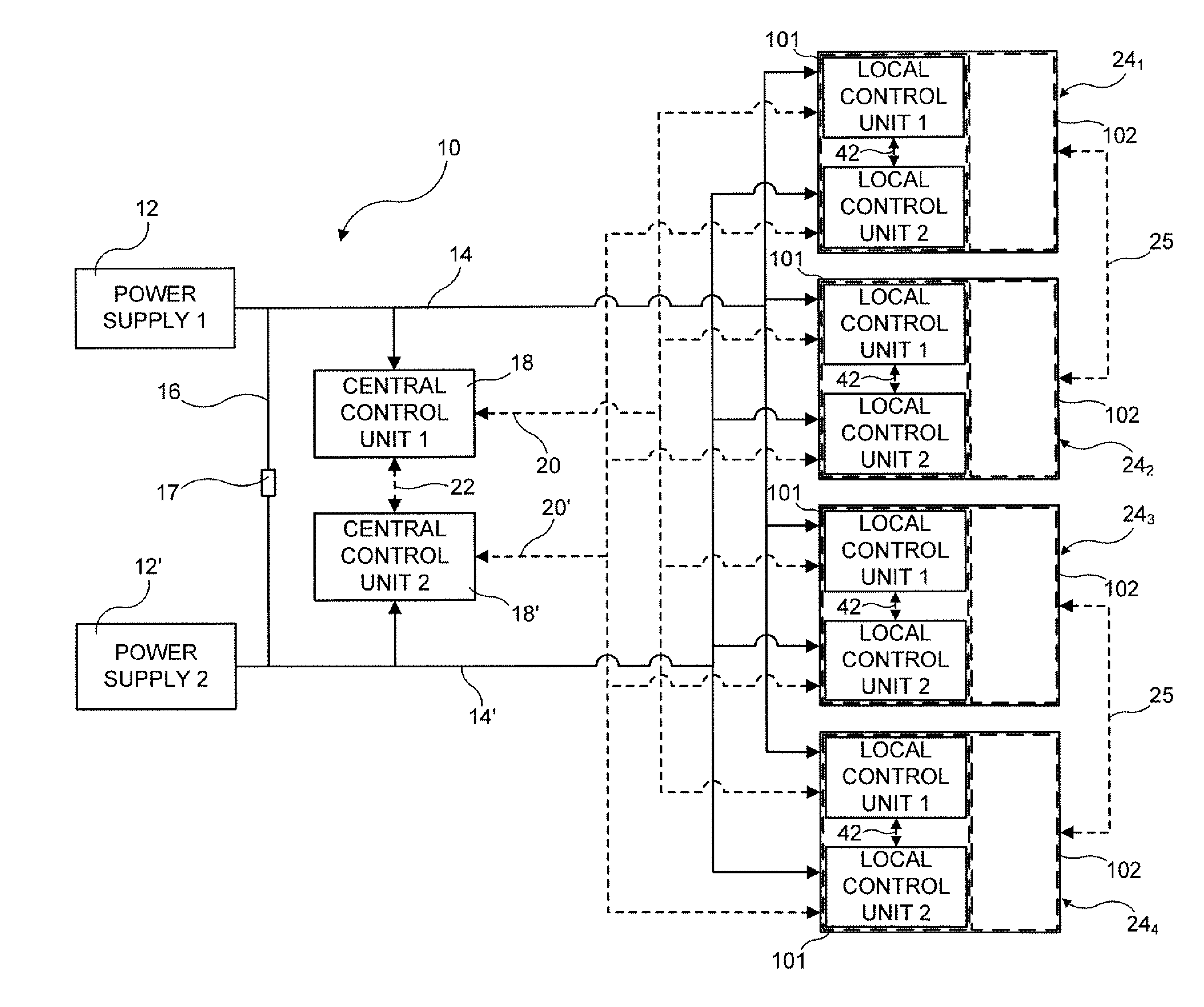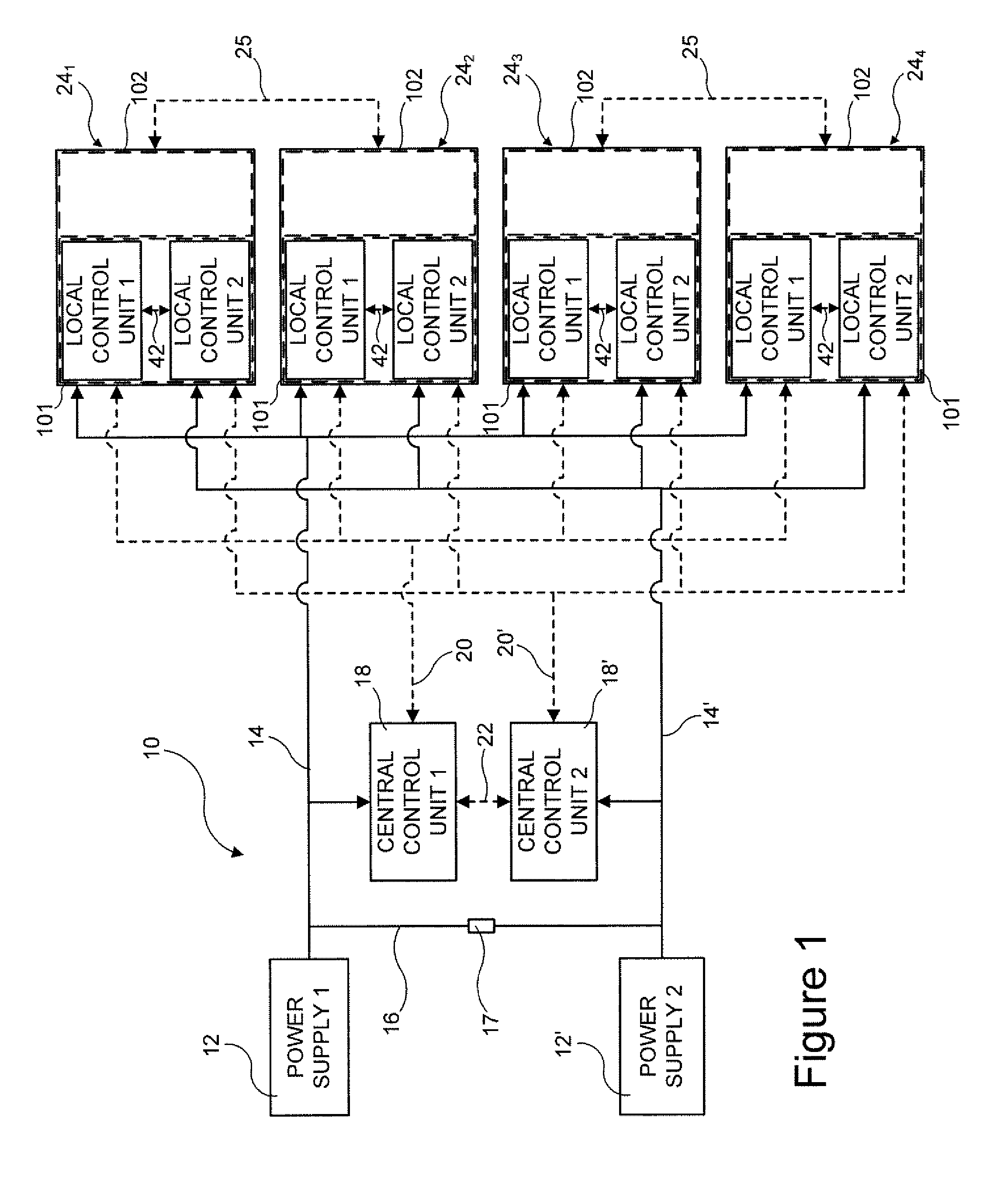Redundant Brake Actuators For Fail Safe Brake System
a brake actuator and redundancy technology, applied in the field of system control of the application of the brake, can solve the problems of high actuator force that has to be applied, large torque, and large amount of torque,
- Summary
- Abstract
- Description
- Claims
- Application Information
AI Technical Summary
Benefits of technology
Problems solved by technology
Method used
Image
Examples
Embodiment Construction
[0040]Referring first to FIG. 1, a vehicle brake system 10 in accordance with an exemplary embodiment of the present invention is shown. System 10 may be employed in any of numerous types of vehicles, although it should be noted that system 10 is particularly well-suited for use in heavy vehicles. It should also be noted that, in FIGS. 1-3 and 7, electrical power supply links are shown using solid lines, while communications links are shown using dashed lines.
[0041]System 10 includes at least a first power supply 12 supplying electrical power to a first power supply network 14 and a second power supply 12′ supplying electrical power to a second power supply network 14′. Preferably, although not necessarily, first and second power supply networks 14, 14′ are in communication via a link 16 so as to provide for power supply redundancy in first and second power supply networks 14, 14′ should one of first or second power supplies 12, 12′ fail. It is also preferable that an isolation mech...
PUM
 Login to View More
Login to View More Abstract
Description
Claims
Application Information
 Login to View More
Login to View More - R&D
- Intellectual Property
- Life Sciences
- Materials
- Tech Scout
- Unparalleled Data Quality
- Higher Quality Content
- 60% Fewer Hallucinations
Browse by: Latest US Patents, China's latest patents, Technical Efficacy Thesaurus, Application Domain, Technology Topic, Popular Technical Reports.
© 2025 PatSnap. All rights reserved.Legal|Privacy policy|Modern Slavery Act Transparency Statement|Sitemap|About US| Contact US: help@patsnap.com



